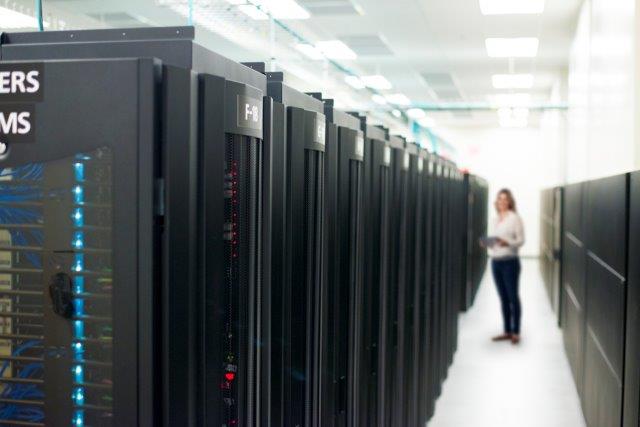
Vaccinations, early detection, and new cures have led to incredible medical breakthroughs over the past several decades. Today, advancements in precision health, wearable technology, genetic sequencing, and big data analytics promise to reshape modern medicine even further.
A critical, yet often overlooked factor in the advancement of healthcare is the underlying health IT infrastructure. As Michigan Medicine faces significant growth in data and applications, it is responding by changing the paradigm in data center operations and management.
“We historically followed a distributed approach to information management: different departments stored critical information and medical records in different formats across multiple data centers managed by multiple vendors,” said Joe Kryza, HITS senior director, Enterprise Infrastructure. “That decentralized approach no longer works. Frankly, it’s a risk to our security, patient-care quality, and financial well-being.”
Prepared for a disaster
Michigan Medicine has two central data centers — the North Campus Data Center and the Arbor Lakes Data Center — that host research, education, clinical, and administrative data. From a structural standpoint, the facilities are designed to be energy efficient and withstand hurricane-force winds.
“Michigan Medicine cannot function at high-occupancy levels without technology being constantly available and disaster tolerant. Recent natural disasters across the country have demonstrated the ramifications of storing data centers below flood lines and without redundancy,” Kryza said. “Centralized and parallel data centers help protect us from a local outage or catastrophic loss, ensuring our telephones, clinical systems, and buildings continue to operate — even in times of crisis.”
Finding common ground
To improve continuity of operations, develop consistent approaches to information management, and achieve cost savings, departments like pathology, radiology, and the Medical School are working with HITS to move their servers and storage into the central data center locations.
“There was a longstanding concern that if a data center wasn’t within walking distance of a clinical lab, your ability to restore it in a nimble and timely fashion would be degraded,” said Ulysses Balis, a professor of pathology and computational scientist. “With modern software, placing laboratory information system servers in a remote location is no longer a risk to continuity of operations.”
“Using consolidated IT resources represents a great opportunity for the institution to save money.”
—Ulysses Balis
Balis also offered that consolidating the number of data centers within Michigan Medicine makes financial sense.
“Over the past several years, economies of scale in storage make a compelling case for different departments not needing to run their own data centers; doing so represents incremental expense that can and should be avoided. Using consolidated IT resources represents a great opportunity for the institution to save money.”
Pathology is already seeing some of the benefits of this collaboration.
“Our relatively small IT operation relies heavily on matrix training, meaning multiple individuals perform multiple roles. For example, four highly trained technical staff within Pathology Informatics used to maintain our 860 virtual servers,” Balis said. “We’re exploring every possibility for consolidation with HITS where it makes sense, as this will allow our staff to focus their expertise and efforts in the areas that truly require pathology-domain expertise, thus elevating our overall level of service and value to the enterprise at large.”
